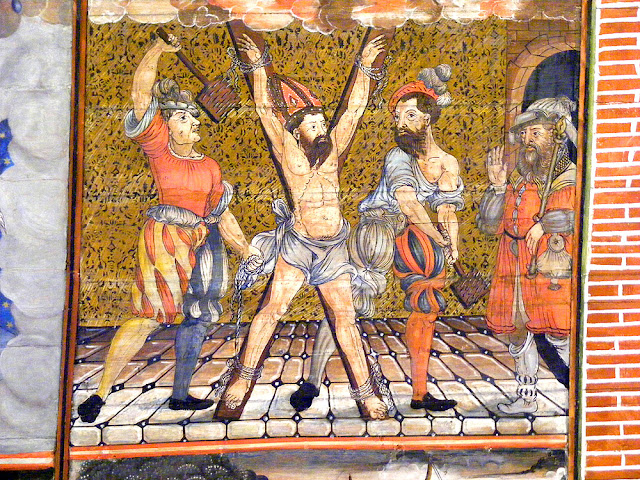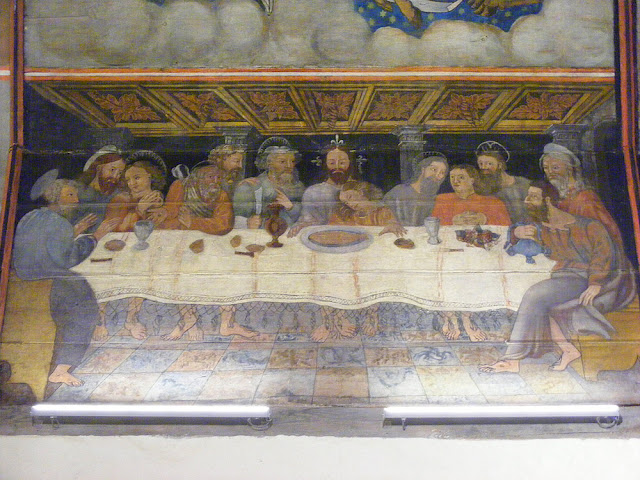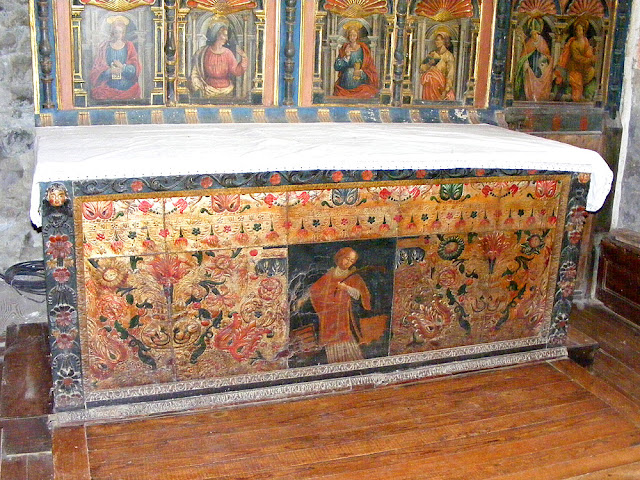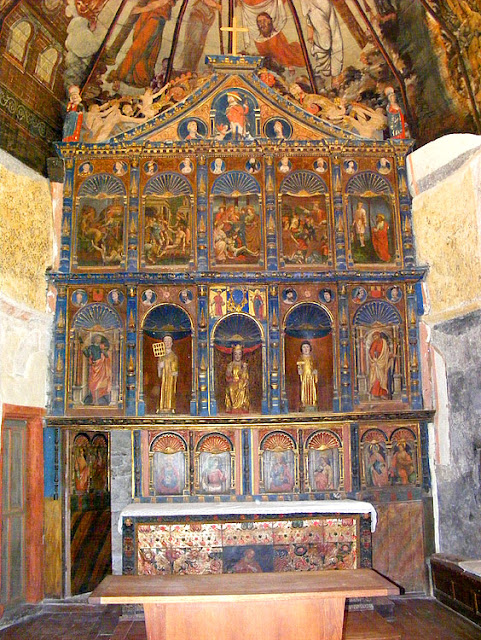The Catholic church of Saint Laurent in Jézeau in the Hautes-Pyrénées is on the Camino de Santiago de Compostela (Fr. Chemin de Saint Jacques de Compostelle), in the Diocese of Tarbes and Lourdes.
Polychrome altarpiece, painted apse and choir vault.
It was owned by the Hospitallers, the knightly monastic order that was dedicated to providing hospitality, health care and protection to pilgrims on their way to or from Santiago de Compostela. The church, with its twin bayed bell gable, nave and apse, as well as the tympanum-chrism reused in the wall at the cemetery entrance, date from the 12 century.
Saint Blaise, being scurged by wool carders wielded by fashionably attired 16th century torturers. He is the patron saint of animals, wild and tame, who came to him of their own accord to be healed.
After a fire in 1532 which destroyed not only the church, but half the village, the romanesque vault was replaced by a panelled wooden vault, decorated with the most remarkable paintings.
Sinners entering the jaws of Hell. Our guide pointed out that all the sinners are naked women, and the beast swallowing them is a wild boar.
In the 19th century the church was doubled in size due to the expansion of the population of the village, which peaked at 350 residents (now 96 people).
Saint Peter and an angel welcoming the saved to Heaven. Our guide pointed out that the saved are all men, modestly covering their genitalia, and they are entering Heaven via a very European pavillion.
The exterior architectural decoration is concentrated on the semi-circular apse. A blind arcade of twin arches and oeil-de-boeuf windows form a 'face', looking out over the valley. According to our guide that was deliberate. Inside, the whole of the apse and choir vault is taken up with a richly decorated polychrome altarpiece and paintings depicting the Last Judgement.
The front of the altar is covered with Spanish Cordovan leather, contemporary with the rest of the decorative scheme.
The church is only accessible to visit by guided tour, on some Sunday afternoons. To get details I phoned the tourist office (Pays d'Art et d'Histoire) for Aure Lourons (Pyrénées 2 Vallées) on +33 5 62 98 42 46. You can see details of the churches in the area that are open on this website: https://patrimoine-aure-louron.fr/. Our guide at Jézeau was a young man studying for an art sociology masters. He was excellent, we had him almost to ourselves and he spoke fluent English!
The startled looking man with the waffle maker next to the Madonna on the altarpiece is Saint Laurent himself. His symbols are the griddle with which he was tortured and a wide sleeved dalmatic robe.
The Last Supper. I notice that Jesus's halo features fleurs de lys.
The Cordovan leather covered altar.
The altarpiece and altar.
Jesus, with the double edged sword to show that the word of God is mightier than the sword. It is supposed to be coming out of his mouth, but is often depicted in this fashion, as though he is being stabbed in the ear.












No comments:
Post a Comment